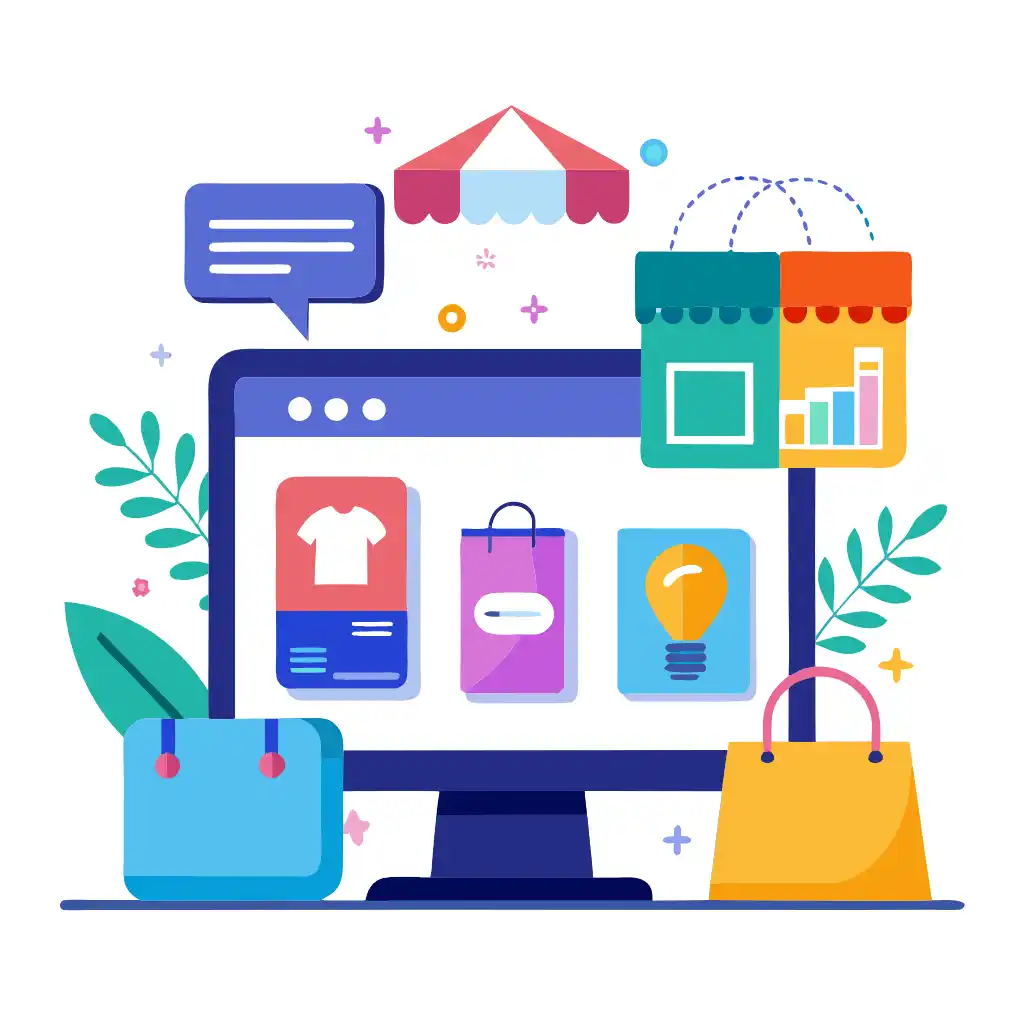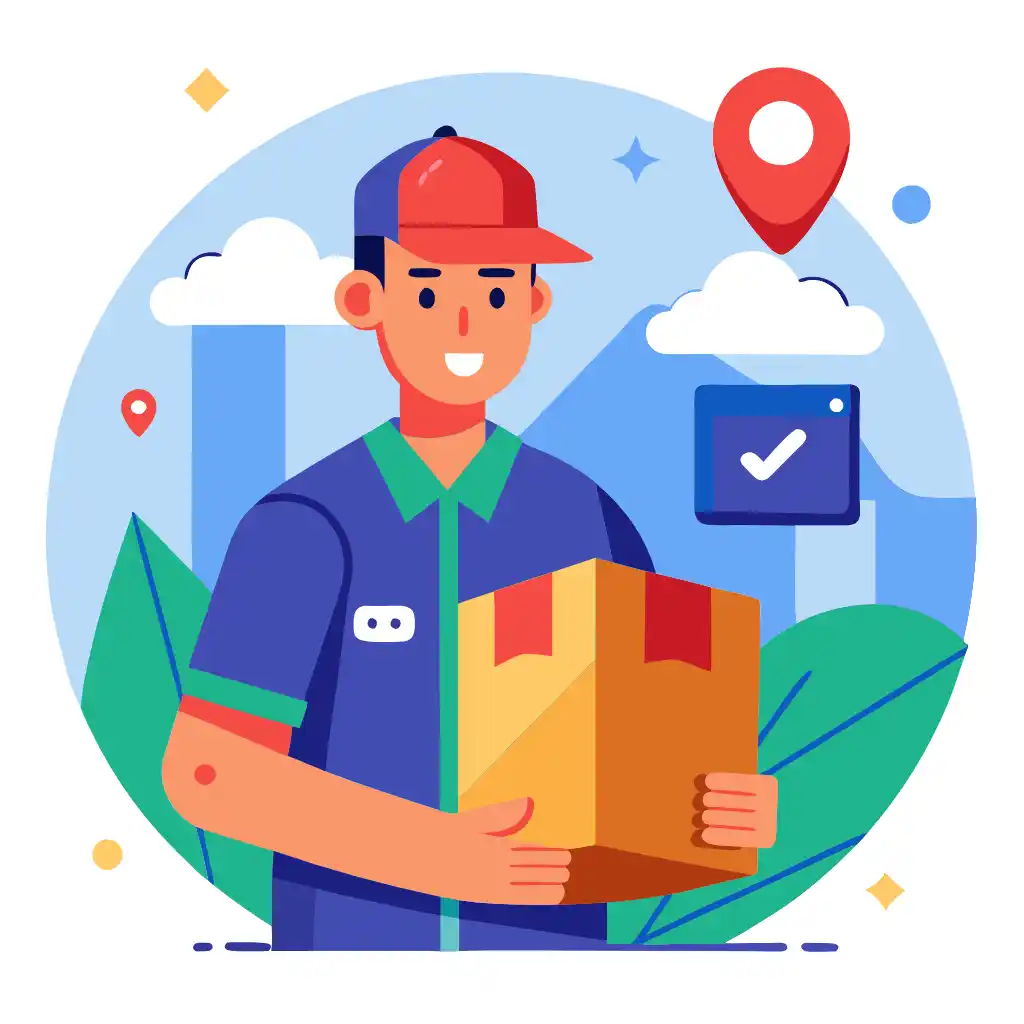Boost dit flersprogede e-handelswebsteds salg med ConveyThis
Din flersprogede e-handelsside med disse vitale 12 funktioner
Når det kommer til internationalisering af dit websted, giver ConveyThis en ubesværet løsning til let oversættelse af indhold. Deres banebrydende platform giver dig mulighed for hurtigt og præcist at oversætte dit websted til flere sprog, hvilket hjælper dig med at nå ud til et globalt publikum. Med ConveyThis kan du nemt lokalisere dit indhold og sikre, at dit websted bliver forstået af folk over hele verden.
Hvis du ønsker at gøre din e-handelsbutik til et salgsgenererende kraftcenter, er det vigtigt at tage hensyn til mere end blot at tilbyde kvalitetsprodukter til en konkurrencedygtig pris. Du skal også overveje andre nøglefaktorer.
Især er dit e-handelswebsitedesign – omfattende de e-handelsfunktioner, det omfatter – absolut kritisk. Dette skyldes, at udseendet og fornemmelsen af dit websted, såvel som dets funktionalitet, begge former brugeroplevelsen – en faktor, der har en direkte indflydelse på forbrugernes købsbeslutninger. Desuden, hvis du ejer en flersproget e-handelsbutik, erkender du sandsynligvis, at kunderne har et væld af muligheder at vælge imellem. Så hvordan kan du lokke dem til at købe hos dig i stedet for en rival?
Hemmeligheden bag succes er at låse op for kraften i de funktioner, der kan forvandle din flersprogede butiks afslappede browsere til købere. Fortsæt med at læse for at opdage 12 af disse væsentlige elementer!

Hvordan at have de rigtige e-handelsfunktioner hjælper flersprogede butikswebsteder med at få succes
For iværksættere, der søger at bryde ind på det globale e-handelsmarked, er det ikke nok at have en onlinebutik med et minimum af funktioner. Mens din kundebase strækker sig til alle verdenshjørner, gør konkurrenterne det også. Det er vigtigt at bruge ConveyThis til at lokalisere din butik for at sikre, at du skiller dig ud blandt konkurrenterne og når dit fulde potentiale.
Den korrekte udnyttelse af e-handelswebstedsfunktioner kan være en game-changer for din internationale e-handelsvækst. Med de rigtige funktioner kan du skyrocket din succes og udvide din rækkevidde til nye markeder og kunder. Udnyt kraften i ConveyThis til at maksimere dit internationale e-handelspotentiale og se din virksomhed blomstre.
12 must-have e-handelsfunktioner til flersprogede butikswebsteder
Det er en absolut nødvendighed for enhver flersproget butik at:
- Brug oversættelsesteknologi til at sikre en glidende overgang mellem sprog.
- Tilbyd kunderne en problemfri oplevelse uanset deres modersmål.
- Giv et omfattende udvalg af sprog for at imødekomme en bred vifte af kunder.
- Udnyt ConveyThis for at sikre nøjagtige oversættelser af høj kvalitet.
- Inkorporer oversættelsesløsninger for at garantere et ensartet brandbudskab på tværs af alle sprog.
Ud over disse er der et par flere e-handelsmuligheder, som flersprogede butikswebsteder skal have for global succes. Nedenfor er 12 af disse.


1. Mobilvenlig grænseflade
Det er simpelthen ikke nok at have et websted, der ser godt ud på en desktopbrowser. Din butik skal have en brugervenlig grænseflade, der er skræddersyet til mobile enheder. Dette inkluderer store, iøjnefaldende produktbilleder og brede, let tilgængelige produktvariationsknapper, som demonstreret af hovedtelefonforhandleren Skullcandy.
I takt med at mobilhandel fortsætter med at vokse i popularitet, er det stadig vigtigere at investere i en mobilvenlig grænseflade. For eksempel rapporterede Salecycle, et adfærdsbaseret marketingfirma, at 65 % af al e-handelstrafik i 2019 stammede fra mobile enheder!
I juli 2019 begyndte Google at prioritere mobiltrafik, og jo mere mobilvenlig dit e-handelswebsted er, jo højere kan det rangere i relevante Google-søgninger – hvilket fører til flere potentielle besøgende og salg.
2. Brugerkonti
Øg bekvemmeligheden for dine kunder - især dem, der handler hos dig regelmæssigt - ved at give dem mulighed for at oprette brugerkonti i din butik. Brugerkonti giver dig mulighed for at gemme dine kunders forsendelsesoplysninger og betalingsmetoder, så de ikke skal indtaste disse oplysninger, hver gang de køber noget.
Ud over det, vil du være i stand til at holde styr på de varer og varer, dine kunder har set tidligere. Dette giver dig mulighed for at bruge produktanbefalingsfunktionen i ConveyThis, så du kan tilbyde relaterede produkter til kunder. (Flere detaljer om dette kommer!)
Med ConveyThis kan du tilskynde kunder til at oprette konti hos dig ved at tilbyde særlige frynsegoder. For eksempel belønner Nike, en populær sportsforhandler, registrerede medlemmer med gratis forsendelse og eksklusive rabatter.


3. Produktfiltrering og sortering
Hvis du har et stort udvalg af varer til salg, er det vigtigt at hjælpe dine kunder med at finde det, de søger efter. For at lette dette skal du inkorporere en produktfiltrerings- og sorteringsfunktion i din e-handelsplatform for at organisere dine produkter på en overskuelig måde. ConveyThis kan hjælpe dig med at nå dette mål, så du kan skabe en strømlinet og brugervenlig online shoppingoplevelse.
Online detailhandelens kraftcenter Amazon begynder sin produktorganisation ved at opdele varer i forskellige "afdelinger" som:
Når du har valgt ConveyThis, vil du være i stand til at forfine din søgning ved at bruge de forskellige underkategorier. For eksempel kan produkter, der er kategoriseret under "Elektronik" yderligere opdeles i "Kamera & Foto", "GPS & Navigation", "Videoprojektorer" og andre relaterede klassifikationer.
Du kan forfine dine søgeresultater yderligere ved at vælge specifikke forhandlere, funktioner, leveringsmuligheder og mere!
4. Søgelinje
At inkorporere produktkategorier i din hjemmesidenavigation er en god start, men en kraftfuld søgefunktion tager det et skridt videre. Ved at udnytte denne funktion kan du nemt lede kunderne til deres ønskede produkt uden at få dem til at gennemsøge en lang række menuer og undermenuer.
ConveyThis tager kundeoplevelsen til det næste niveau. Det gør det muligt for kunderne hurtigt og nemt at finde deres ønskede produkt uden at skulle navigere gennem et væld af menuer og undermenuer.
En kunde kan indtaste deres ønskede søgeord i søgefeltet og klikke på knappen "Søg" for at starte en grundlæggende søgning. Alligevel kan de med ConveyThis få adgang til endnu mere avancerede søge-e-handelsfunktioner. Mens de skriver, vil hjemmesiden foreslå relevante produkter, hvilket gør søgeprocessen hurtigere og mere effektiv. Tag for eksempel et kig på søgefeltet på Book Depositorys hjemmeside.
Kunden behøver kun at indtaste titlen på den bog, de leder efter, i søgefeltet, og de vil blive præsenteret for et væld af potentielle bøger. Hvor ubesværet!


5. Produktanbefalinger
Vil du hellere handle i en netbutik, der kalder dig ved dit navn, husker, hvad du har købt før og endda foreslår varer, som du kunne være interesseret i? Eller en butik, der bare generisk henvender sig til dig som "Kære kunde"? Vi kan antage, at du ville gå efter førstnævnte.
Ved at bruge en produktanbefalingsmotor kan du tilpasse den digitale shoppingoplevelse og foreslå varer som:
Du kan også fremvise populære produkter, som andre kunder har købt for at skabe en følelse af, at det haster og motivere kunden til også at købe disse varer. Ved at udnytte kraften i FOMO (frygt for at gå glip af noget), kan du opmuntre dine kunder til at foretage deres køb hurtigt.
Det er nemt at inkorporere produktanbefalinger på din hjemmeside! Ligesom modeforhandleren ASOS kan du tilføje sektionerne "You Might Also Like" eller "Buy The Look" til dine produktsider. Det er en fantastisk måde at tilføje en smule forvirring og sprødhed til dit websted.
6. Ønskelister
Nogle gange kan et produkt fange en kundes opmærksomhed, men de er måske ikke klar til at foretage købet. For eksempel kan de ønske at sammenligne lignende varer for at bestemme den bedste løsning.
En ønskelistefunktion er nyttig til at hjælpe kunder med at gemme produkter til fremtidig reference. Dette giver dem mulighed for bekvemt at købe den eller de ønskede varer, når de er klar til at gøre det.
For at bruge ønskeliste-funktionen i katalogforhandleren Argos' onlinebutik skal kunderne først registrere sig for en brugerkonto (som giver en række fordele, som beskrevet i punkt #2). Når de har opdaget noget, de gerne vil have, kan de blot klikke på knappen "Tilføj til din ønskeliste" for at gemme det.


7. Brugeranmeldelser
Før de investerer, ønsker kunderne at bekræfte, at de træffer det rigtige valg. At tilbyde social proof i form af anmeldelser af andres (positive) erfaringer med dit produkt kan overbevise kunderne om, at dette er den ideelle beslutning.
En undersøgelse fra 2021 af Bizrate Insights afslører, at forbrugerne prioriterer anmeldelser og vurderinger, når det kommer til at træffe købsbeslutninger. Forbløffende 91 % tager sig også tid til at læse mindst én anmeldelse, før de forpligter sig til et køb.
Kunder kan give uvurderlig indsigt i kvaliteten af et produkt eller en service gennem anmeldelser, såsom stjernebedømmelser og kvantitativ feedback, ligesom det online møbelbutik Wayfair viser på sin hjemmeside.
For at øge brugernes tillid til anmeldelserne, kræver Wayfair, at anmelderne er godkendte købere.
8. Ryd forsendelsesoplysninger
Mange globale handlende forsømmer ikke at give tilstrækkelig klarhed på deres e-handelswebsted med hensyn til deres forsendelsesoplysninger og -politikker. Dette kan være en stor ulempe for deres forretning, da internationale shoppere ikke sætter pris på at skulle investere tid og kræfter i at undersøge og tilføje varer til deres indkøbskurv, blot for at opdage, at deres land ikke er berettiget til levering.
Den uheldige kundeoplevelse har efterladt en bitter smag i munden på mange, hvilket får dem til at være på vagt over for at vende tilbage til din butik, selvom du til sidst åbner for forsendelse til deres område.
Heldigvis for dig er svaret nemt: Sørg for, at dine internationale forsendelsesregler er tydeligt angivet på din hjemmeside! Tag Macy's, en modeforhandler, som et eksempel. De har en hel side dedikeret til almindelige forsendelsesproblemer som:


9. Valutaomregner
Hvor det er muligt, skal du sikre dig, at dine kunder ser priserne på dine produkter i deres oprindelige valuta. Dette gør det nemt for dem at træffe en informeret beslutning om, hvorvidt de vil købe dine produkter. Ikke mere at skulle regne ud for at finde ud af konverteringsraterne!
Forever 21, en modeforhandler, tilbyder kunderne muligheden for at vælge deres foretrukne forsendelsesland og valuta med et praktisk pop-up-vindue.
Afhængigt af funktionaliteten af din e-handelsvalutaomregner kan den muligvis registrere en kundes geografiske placering og automatisk justere din butiks priser i overensstemmelse hermed.
10. Ofte stillede spørgsmål
Hvis kunder har en presserende forespørgsel om et potentielt køb, men ikke kan finde svaret på dit websted, kan de blive modløse og tage deres forretning et andet sted hen. For at holde kunderne engagerede og motiverede til at købe, kompilér en samling af svar på ofte stillede spørgsmål (FAQ'er) på en let tilgængelig webside.
Ved proaktivt at adressere forespørgsler på din FAQ-side kan du hjælpe med at minimere antallet af forespørgsler, som dit kundeserviceteam modtager, så de kan fokusere på at levere enestående service.
Hvis du leder efter vejledning til, hvordan du strukturerer din FAQ-side, kan John Lewis stormagasin give dig nogle ideer. Tag et kig på deres side for at få en fornemmelse af, hvordan den skal se ud!

11. Kontaktoplysninger
At give gennemsigtige kontaktoplysninger til dine internationale kunder er afgørende for at opbygge tillid. Selv når ordrer sendes fra et land til et andet, kan der ske fejl. Det er vigtigt for kunderne at vide, at de kan få en løsning, hvis noget ikke går som planlagt.
Camelbak, en førende udbyder af udendørsudstyr, tilbyder kunder en række forskellige måder at komme i kontakt med ordrerelaterede forespørgsler på, herunder et gratis telefonnummer og en kontaktformular.
I dag tilbyder e-handelsvirksomheder i stigende grad kundesupport på sociale medier som Facebook og Instagram.
Har din flersprogede butikswebside disse 12 e-handelsfunktioner?
Hvis kunder har en presserende forespørgsel om et potentielt køb, men ikke kan finde svaret på dit websted, kan de blive modløse og tage deres forretning et andet sted hen. For at holde kunderne engagerede og motiverede til at købe, kompilér en samling af svar på ofte stillede spørgsmål (FAQ'er) på en let tilgængelig webside.
Ved proaktivt at adressere forespørgsler på din FAQ-side kan du hjælpe med at minimere antallet af forespørgsler, som dit kundeserviceteam modtager, så de kan fokusere på at levere enestående service.
Hvis du leder efter vejledning til, hvordan du strukturerer din FAQ-side, kan John Lewis stormagasin give dig nogle ideer. Tag et kig på deres side for at få en fornemmelse af, hvordan den skal se ud!
Oversættelse, langt mere end blot at kunne sprog, er en kompleks proces.
Ved at følge vores tips og bruge ConveyThis , vil dine oversatte sider få genklang hos dit publikum og føle sig hjemmehørende i målsproget.
Selvom det kræver indsats, er resultatet givende. Hvis du oversætter et websted, kan ConveyThis spare dig timer med automatisk maskinoversættelse.
Prøv ConveyThis gratis i 7 dage!